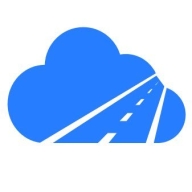

Zapier and Skyvia compete in data integration and automation solutions. Each product offers distinct benefits, with Zapier having an advantage through broad integration capabilities and ease of use, while Skyvia impresses with its advanced data management capabilities.
Features: Zapier provides extensive app integration with simple workflow creation, making it a versatile tool for various automation tasks. Its straightforward interface facilitates easy automation setup. Skyvia offers robust data integration, including cloud backup and comprehensive data management features, making it suitable for complex data handling operations.
Ease of Deployment and Customer Service: Zapier is favored for its quick setup and user-friendly interface, allowing users with minimal technical knowledge to deploy effectively. Skyvia requires a more involved setup, needing moderate technical skills, but offers extensive documentation and support to guide users through the process.
Pricing and ROI: Zapier's pricing plans are scalable, catering to different business sizes with a quick ROI due to low setup costs and easy deployment. Skyvia may involve higher initial costs but compensates with its advanced features and long-term benefits in data management, aiming for substantial ROI over time.
| Product | Market Share (%) |
|---|---|
| Zapier | 2.3% |
| Skyvia | 0.3% |
| Other | 97.4% |

| Company Size | Count |
|---|---|
| Small Business | 29 |
| Midsize Enterprise | 10 |
| Large Enterprise | 7 |
Skyvia is a cloud-based data integration platform enabling seamless data connection, management, and analysis across cloud apps and databases.
Skyvia offers a comprehensive suite for ETL, data backup, replication, and connectivity across major cloud services. It's designed for users requiring robust data manipulation and transfer capabilities without extensive coding knowledge. Its intuitive tools simplify complex tasks like data synchronization and transformation.
What are the key features of Skyvia?Industries like e-commerce, finance, and healthcare implement Skyvia to achieve efficient data processing and analytics integration, ensuring consistent data flow and real-time insights into operations.
Zapier is a tool for primarily non-technical users to connect together web apps.
An integration between two apps is called a Zap. A Zap is made up of a Trigger and one or more Actions or Searches.
Whenever the trigger happens in one app, Zapier will automatically perform the actions or searches in another app in order.
Zaps are very lightweight and easy to set up. Zaps do not import or export old data (they only operate on new items created after the Zap is enabled). Zaps are also not kept in sync ("two way syncing") after the Zap is triggered.
Zaps are deceivingly simple if you're used to dealing with complex and difficult integrations. Their simplicity is what enables anyone to create them.
We monitor all Cloud Data Integration reviews to prevent fraudulent reviews and keep review quality high. We do not post reviews by company employees or direct competitors. We validate each review for authenticity via cross-reference with LinkedIn, and personal follow-up with the reviewer when necessary.